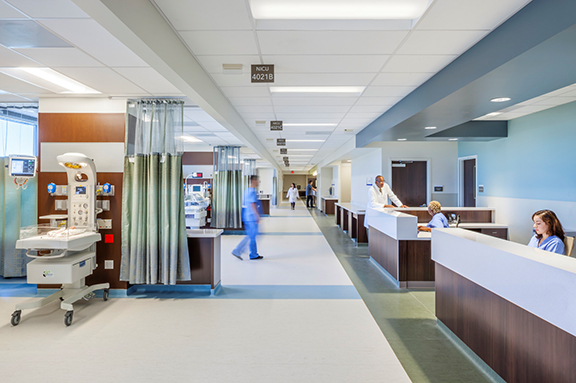
Wiring Healthcare Spaces - A Case Study
- Category: Blog

We came across an excellent article by Kyle Krueger, the Executive Director of Codes & Standards for the NECA that we wanted to share. For our customers that build out or renovate health care spaces. It appeared in Electrical Contractor, Powering Progress, A case study on wiring patient care spaces by Kyle Krueger.
During my 25 years in the electrical industry as an inside wireman, authority having jurisdiction and educator, I’ve helped many people complete National Electrical Code-complaint installations. In this column, I’ll take a look at some case studies and the lessons installers learned.
This case delves into the journey of an electrical contractor navigating the intricacies of a healthcare facility wiring project. A once-vacant grocery store was being converted into a cutting-edge physical and occupational therapy facility.
In addition to conventional office spaces, examination rooms and general rehabilitation equipment rooms, 12 patient consultation rooms took up a substantial portion of the building. As the project progressed, an ambitious general foreman—ahead of schedule—contacted the local electrical inspection department to schedule the rough electrical inspection.
During the inspector’s visit, everything appeared in order. However, questions were raised about whether the patient rooms were solely intended for consultations and meetings. The wiring used in these rooms was standard type metal-clad cable, acceptable for a consultation room but inadequate for patient care or examinations.
Patient care spaces demand a wiring method that provides additional protection. The electrical wiring serving healthcare facilities must maintain a high level of reliability, integrity and life safety, so they are subject to more extensive codes and regulations.
For example, for the wiring requirements in patient care spaces, Section 517.13 of the 2023 NEC mandates branch circuits serving such spaces to use (2) two different types of equipment grounding conductors. This ensures a fail-safe mechanism that guarantees a reliable equipment grounding connection in all branch circuits in spaces where patients may be connected to electronic medical equipment during treatment or examination.
Present and future needs
The situation posed a unique set of challenges for the AHJ. Typically, inspections focus on the present use of space and relative installations, with speculation about future needs considered beyond the inspection scope. A seasoned AHJ knows when to consider potential future scenarios, especially when it serves the client and customer’s best interests.
The inspector sought assurance from the contractor and customer that the rooms would be used as intended, aiming to prevent costly delays during the final certificate of occupancy inspection.
As the project approached completion, the general foreman asked the inspector for the final inspection and certificate of occupancy. The inspection went well until they entered the first patient consultation room. To their surprise, each room now housed a cord-and-plug-connected medical examination table and mobile medical diagnostic station, which transformed them into patient care spaces. The contractor and inspector sought an explanation.
The client had decided to equip these rooms for future expansion without involving the EC. The seemingly harmless equipment posed significant challenges because it required hospital-grade receptacles. Simply the existence of patient care equipment in these consultation rooms reclassified them into patient care spaces. According to the NEC, patient care spaces require specific wiring methods, and the standard Type MC cable used was insufficient.
Who determines the use of a room?
The core issue became; who or what determines the use of a room in a healthcare facility? The NEC defines a patient care space as “any area where patients were intended to be examined or treated,” which requires specific wiring methods meeting equipment grounding requirements.
The rooms’ uses were determined by the governing body of the healthcare facility, defined by NFPA 99, Health Care Facilities Code, and the NEC as “the persons with overall legal responsibility for facility operation.”
Repercussions
In this project, the governing body deemed these rooms as patient care spaces without consulting the EC. The repercussions were project delays and additional costs. However, the gravity of the situation loomed larger. NEC regulations are not arbitrary; they exist to safeguard life. In healthcare facility wiring, precision isn’t a preference. It is the difference between life and death.
There are several lessons here. A healthcare facility’s governing body should be involved in the design process, regardless of project size. An official process should be established to involve the EC when considering deviations from the original design to prevent surprises during the final inspection.
The foreman should be well-versed in the use of rooms and act as the primary contact for inspectors and GCs. Education is a potent tool, because other trades or clients may be unfamiliar with electrical codes or healthcare facility requirements. The governing body’s space designations should be documented officially, with copies available for the AHJ.
This case emphasizes the critical role of communication, meticulous planning and unwavering adherence to codes in the intricate dance of healthcare facility wiring.


